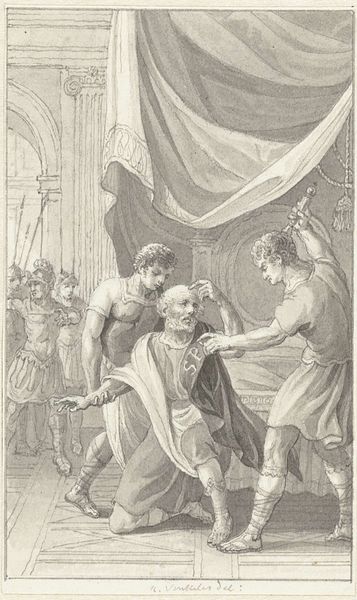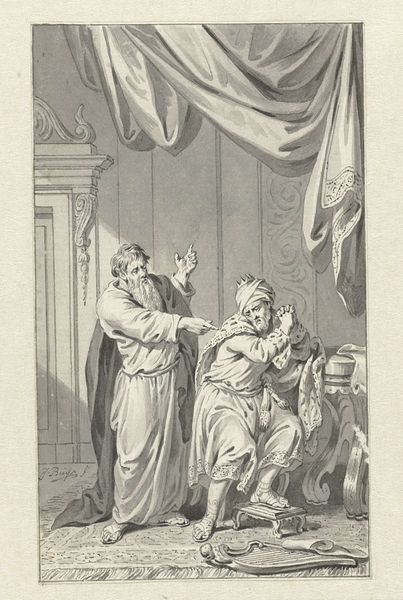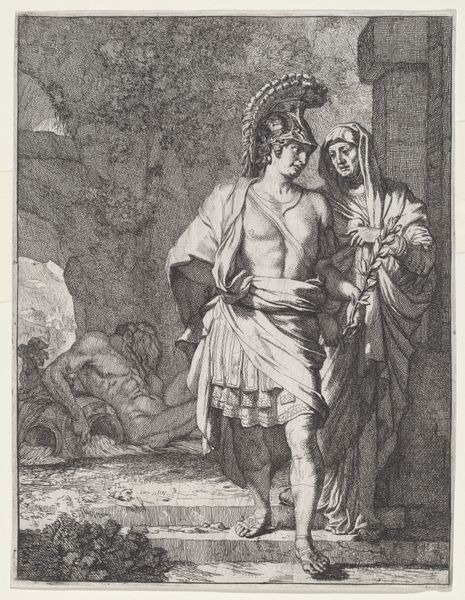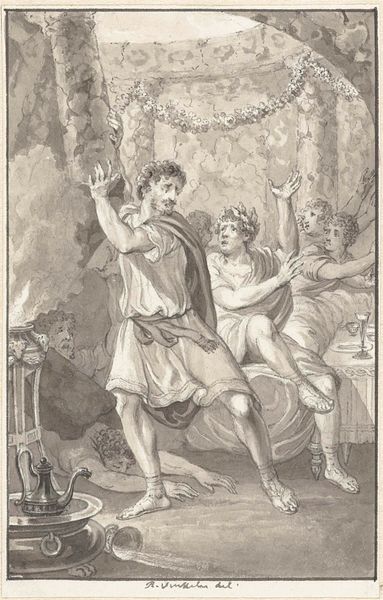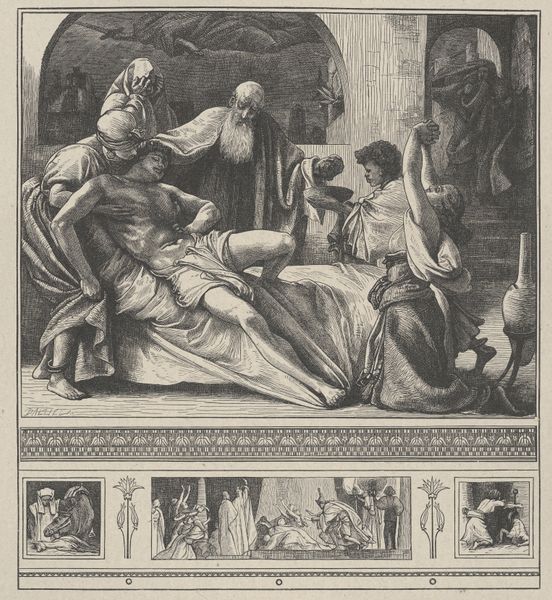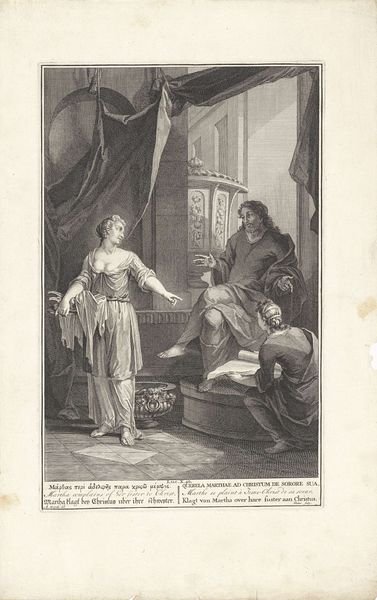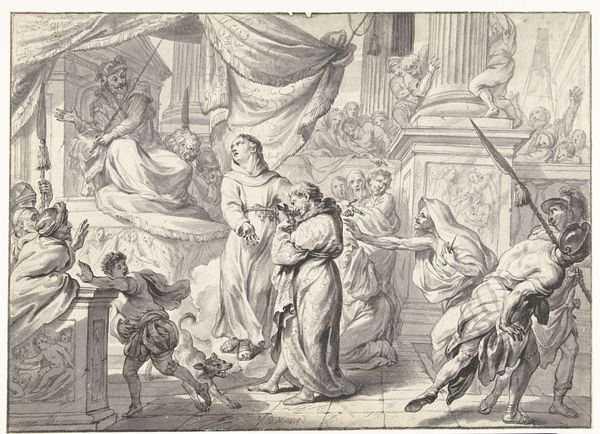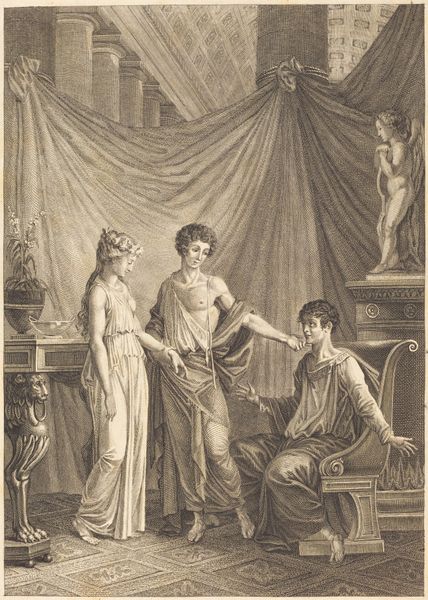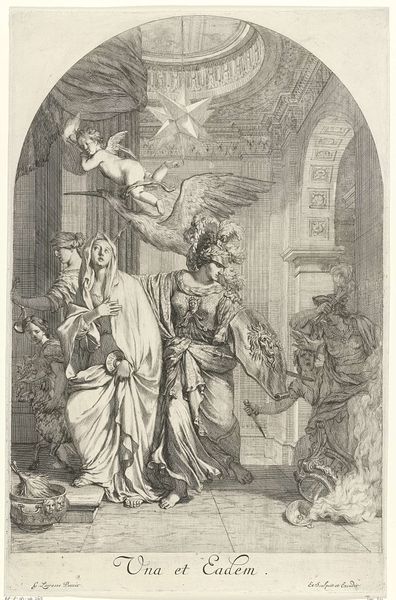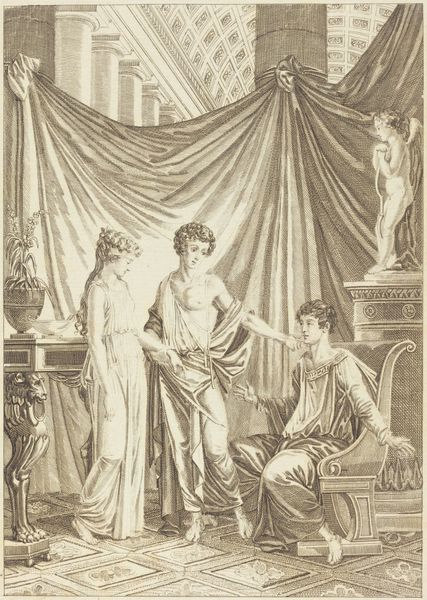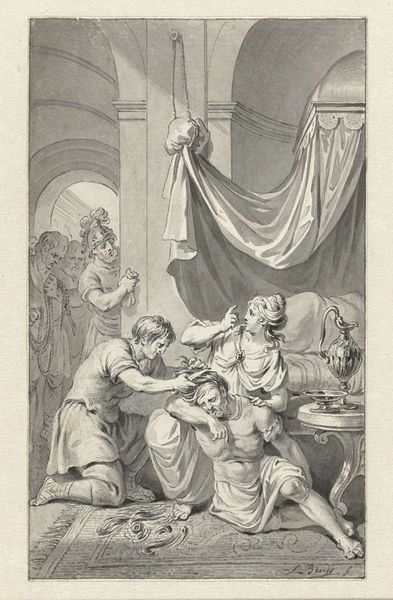
Caracalla vermoordt zijn broer Geta in de slaapkamer van hun moeder 1804
0:00
0:00
drawing, graphite, charcoal
#
drawing
#
neoclacissism
#
pencil sketch
#
old engraving style
#
graphite
#
pencil work
#
charcoal
#
history-painting
#
academic-art
Dimensions: height 135 mm, width 85 mm
Copyright: Rijks Museum: Open Domain
Curator: This arresting graphite drawing, titled “Caracalla vermoordt zijn broer Geta in de slaapkamer van hun moeder,” was created around 1804 by Reinier Vinkeles and currently resides here at the Rijksmuseum. It’s a truly chilling portrayal of fratricide. Editor: Chilling indeed! My immediate impression is one of stark horror. The mother's desperate reach, the terrified child clinging to her... the brutal figure of Caracalla himself, looming over them. It evokes a palpable sense of dread. Curator: Vinkeles's piece speaks to the enduring fascination with Roman history, doesn’t it? This scene in particular, the power struggle and blatant power grab… it's something that certainly reflects the political maneuverings that defined that historical period, including gender and the social hierarchy. How is violence shaped by political opportunity? And more importantly, what's the meaning that this sort of violence generates for the ruling and subordinate classes? Editor: Precisely. The Neoclassical style—with its focus on clean lines and dramatic, idealized forms—renders the brutal act even more unsettling. We're witnessing the dissolution of the Roman Empire and all the political instability that brings to its citizens; but also, perhaps, Vinkeles suggests here that something fundamental to social life is coming undone. Curator: It's also a very performative violence, if that makes sense. The presence of the guards at the doorway suggests this is a calculated act, a display of power rather than a crime of passion. This murder takes place in the most intimate location: the mother's chambers, who's represented not only as victim, but as witness. Vinkeles highlights the power of the ruling classes, whose ability to exercise and escape criminal behaviour serves to enhance and embolden their authority, making this painting a political piece that resonates strongly in our contemporary context, no? Editor: I think you are absolutely right. Moreover, this resonates in our era of ubiquitous surveillance where a single visual tells an entire historical story that, with an expanded lens, we can evaluate, analyze, interpret and criticize for the construction and perpetuation of gender violence. Curator: Examining “Caracalla vermoordt zijn broer Geta” has definitely heightened our sense of its complex layering. Editor: Yes. It’s a bleak, affecting drawing and reinforces that violence is both a visual phenomenon as well as a societal ill.
Comments
No comments
Be the first to comment and join the conversation on the ultimate creative platform.
